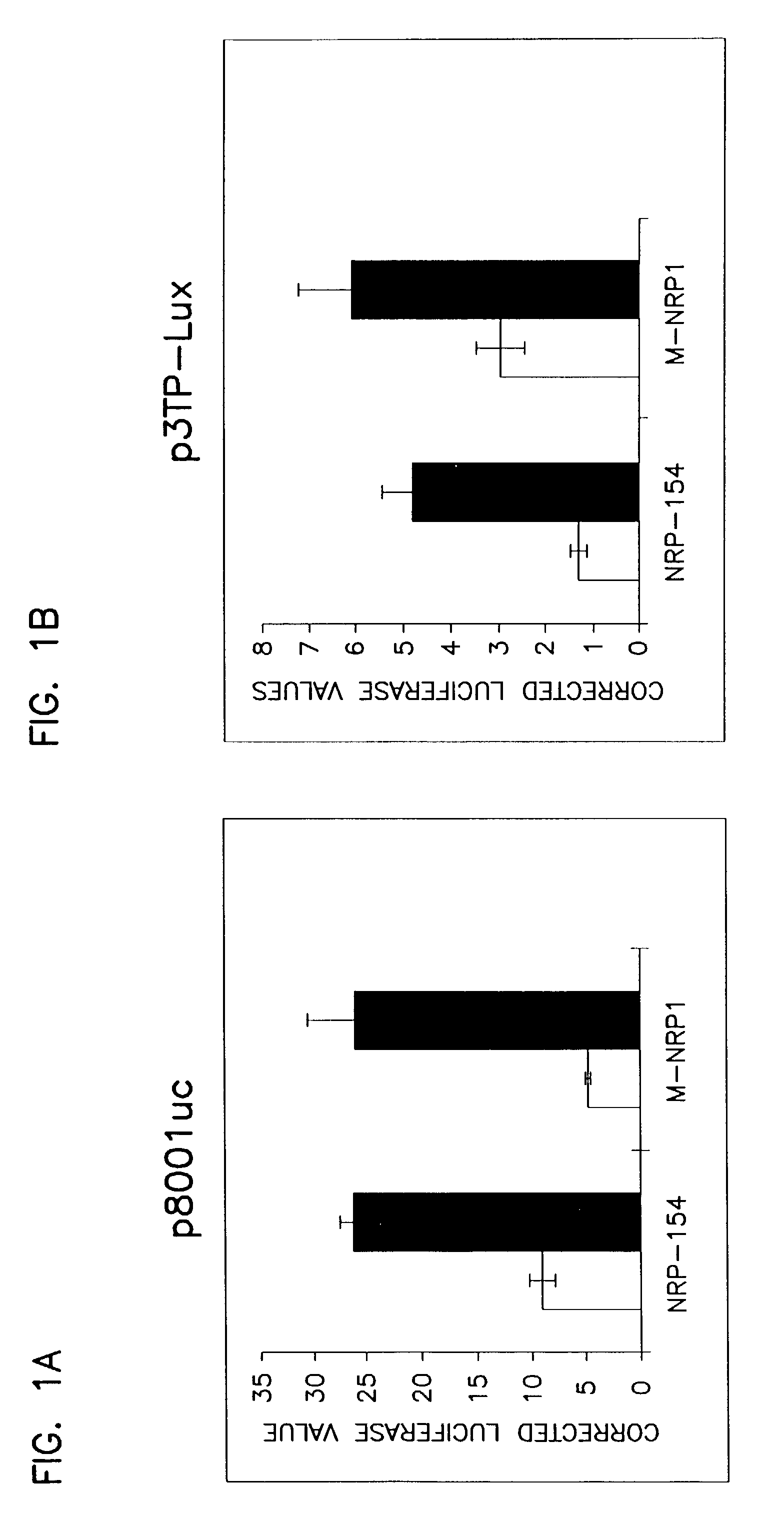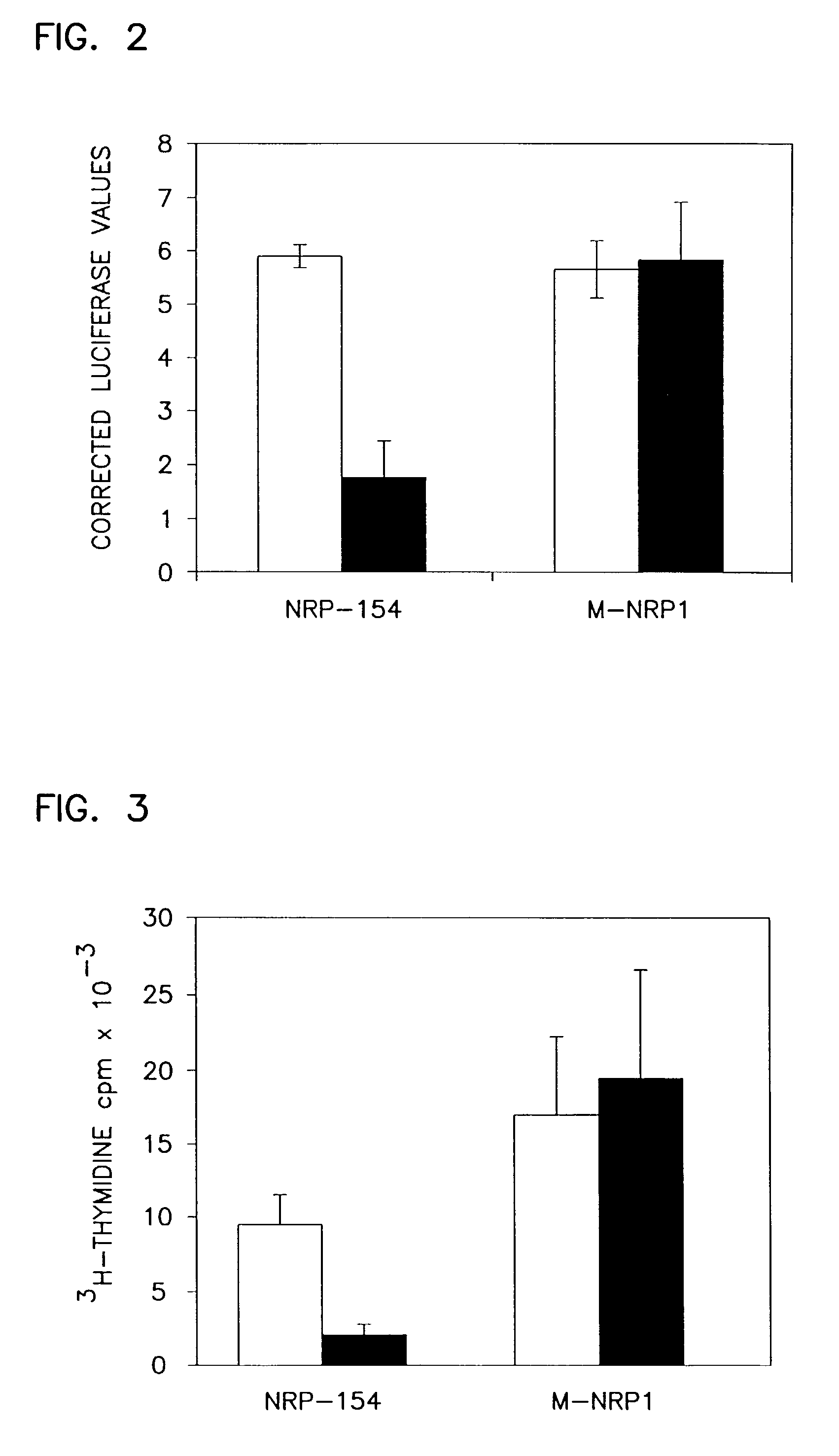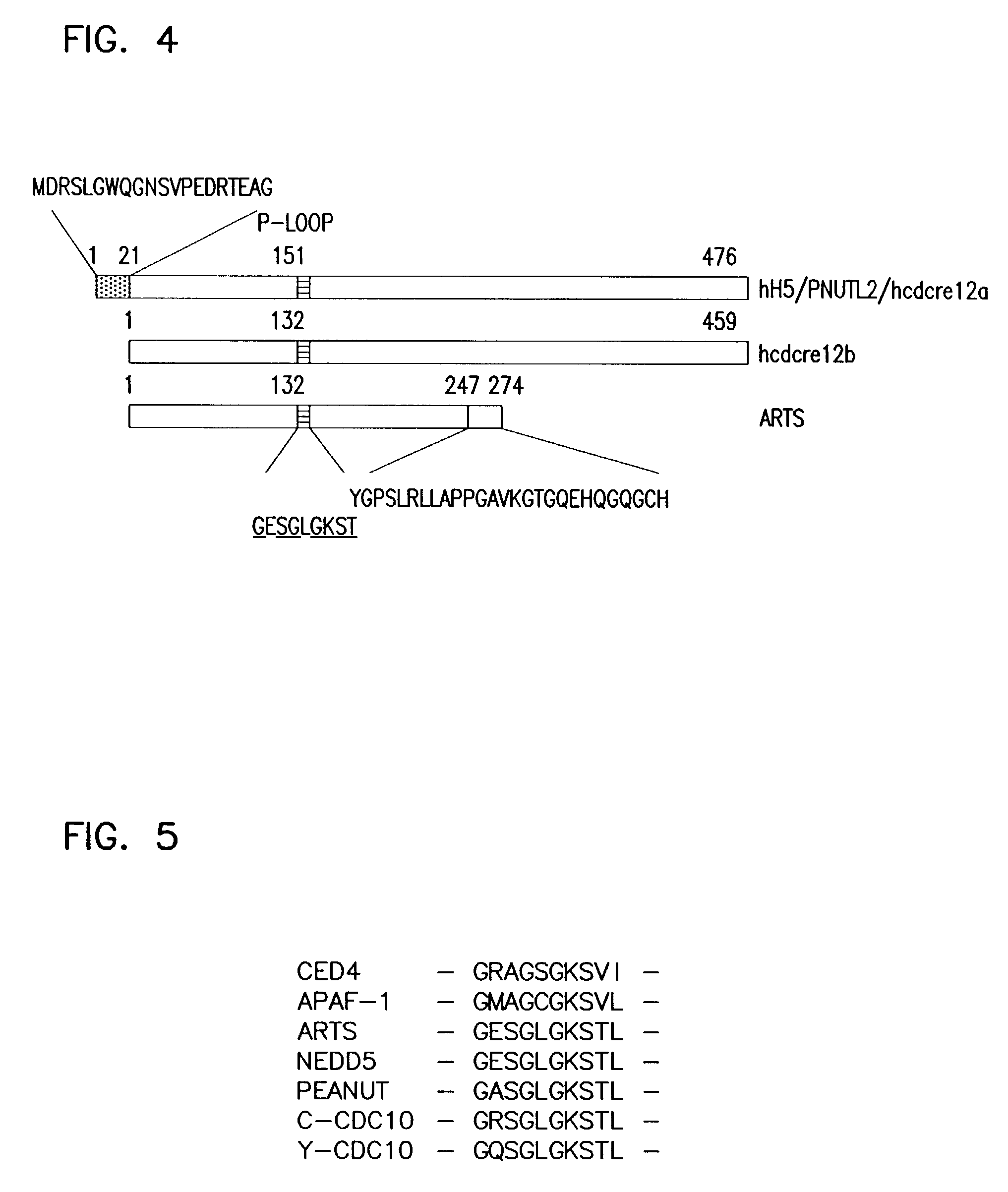Novel human septin and uses therefor
a human septin and human technology, applied in the field of new human septin and uses, can solve the problems of oligomeric compound with its target nucleic acid affecting the normal function of the nucleic acid, and the sample need not be obtained from a cell
- Summary
- Abstract
- Description
- Claims
- Application Information
AI Technical Summary
Problems solved by technology
Method used
Image
Examples
example i
Retroviral Insertional Mutagenesis
[0182] Retroviral insertional mutagenesis of rat prostate carcinoma cells (NRP-154) was used to obtain mutant cell lines resistant to TGF-.beta.1. NRP-154 cells were selected because this cell line has been previously shown to be sensitive to TGF-.beta. induced apoptosis (Prehn et al., (1994) Proc. Natl. Acad. Sci U.S.A., 91: 12599-12603); Ren et al., (1997) Brain Res. Mol. Brain Res., 48: 315-322; Danielpour et al., (1994) Cancer Research, 54: 3413-3421; and Hsing et al., (1996) Cancer Res., 56: 5146-5149).
[0183] NRP-154 rat prostatic epithelial cells were derived from the non-neoplastic dorsal-lateral prostate of Lobund Wistar rats and treated with N-methyl-N-nitrosurea and testosterone propionate as described by Prehn et al., (1994) Proc. Natl. Acad. Sci. U.S.A., 91: 12599-12603. The NRP-154 cells are then grown in DMEM / F12 medium containing 10% fetal bovine serum and antibiotics in 5% CO.sub.2 atmosphere. 5.times.10.sup.7 NRP-154 cells, cultured...
example ii
Clone Isolation
[0184] Phenotypic selection was used to isolate clones resistant to TGF-.beta. induced apoptosis. To select for cells mutated in the TGF-.beta. signaling pathway, the mutant cells were cultured for 17 days in the presence of 20 ng / ml recombinant human TGF-.beta.1 (R&D Systems, Inc., Minneapolis, Minn.). To eliminate spontaneous mutants, the cells were then cultured for an additional 21 days in the presence of both TGF-.beta.1 and 100 .mu.g / ml G418 (Geneticin, Gibco BRL Life Technologies, Gaithersburg, Md.). Fifteen clones resistant to both TGF-.beta.1 and G418 were isolated. Three clones, M-NRP1, M-NRP2 and M-NRP3 were expanded and further characterized.
[0185] The table below provides a comparison of the parent NRP-154 cell line and one of the mutant clones, M-NRP1.
3 Parent Cell: NRP-154 Clone: M-NRP1 Expresses TGF-.beta. receptors Expresses TGF-.beta. receptors Expression of target genes are Expression of target genes are induced in response to TGF-.beta. induced in ...
example iii
Gene Expression
[0186] To ascertain whether the insensitivity of the mutant cells to TGF-.beta. induced apoptosis was due to loss of receptor expression or signaling, pathways modulated by TGF-.beta.1 were examined to determine whether signaling to these targets was disrupted.
[0187] A. Receptor Expression
[0188] To determine whether the TGF-.beta. receptors were expressed in the three clones, a receptor cross-linking assay was performed.
[0189] Recombinant human TGF-.beta.1 was labeled with .sup.125Iodine using the chloramine-T method (Kyprianou et al., (1989) Mol. Endocrinol. 3: 1515-1522). Cells were seeded at 60% confluence in 100-mm plates and incubated for 4 hours at 4.degree. C. with 100 pM (.sup.125I)TGF-.beta.1 with or without 100-fold excess of unlabeled TGF-.beta. 1. Cross-linking was performed with disuccinimidyl suberate as described by Guo et al., (1999) Cancer Res 59: 1366-1371. Samples were subjected to electrophoresis on a 4-12% gradient sodium dodecyl sulfate-polyacryl...
PUM
| Property | Measurement | Unit |
|---|---|---|
| Fraction | aaaaa | aaaaa |
| Fraction | aaaaa | aaaaa |
| Sensitivity | aaaaa | aaaaa |
Abstract
Description
Claims
Application Information
 Login to View More
Login to View More - R&D
- Intellectual Property
- Life Sciences
- Materials
- Tech Scout
- Unparalleled Data Quality
- Higher Quality Content
- 60% Fewer Hallucinations
Browse by: Latest US Patents, China's latest patents, Technical Efficacy Thesaurus, Application Domain, Technology Topic, Popular Technical Reports.
© 2025 PatSnap. All rights reserved.Legal|Privacy policy|Modern Slavery Act Transparency Statement|Sitemap|About US| Contact US: help@patsnap.com



